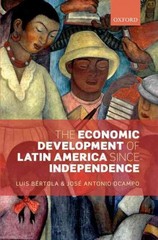May you please help me solve Exercise 2, Table 16.2, Labor supply and demand, Figure 16.1 and #1-11, including Table 16.3? Thank you!
Exercise 2 The differences in labor goals are the focus of this exercise . 5. Suppose a union asks each member to contribute a certain percentage of income to the union. Therefore, when the wage bill is maximized the union maximizes the dues it receives. The amount Suppose that the supply and demand schedules in Table 16.2 apply to a particular labor market. of labor that would maximize union dues would be workers at a wage of per hour. Table 16.2 Suppose the union wishes to maximize the number of employees that it has so that it can become a Labor supply and demand political force at the ballot box. The maximum amount of labor that such a union would be able to recruit would be _ workers at a wage of per hour. Wage rate (dollars per hour) $14 13 12 11 10 9 8 7 6 5 7. The amount of labor hired by a monopsonist would be workers at a wage of Quantity of labor demanded per hour. (workers per hour) Total wage bill (dollars per hour) 0 1 2 3 5 6 7 9 The following are the names of some of the labor market situations described in the questions above: Marginal wage ( dollars per worker) Competition (question 3) Wage rate (dollars per hour) Union monopolist (question 4) $3 5 7 Quantity of labor supplied Monopsony (question 7) (workers per hour) Total wage (dollars per hour) 1 3 5 7 9 8. Each of the labor market situations listed above will result in a different wage-labor combination. Use the corresponding letter to label each wage-labor outcome in Figure 16.1. Marginal factor cost (dollars per worker) Rank the above list of labor markets in order with respect to wage rates and then rank them with Figure 16.1 respect to total employment. Table 16.3 Amount Wage of labor Rank (highest to lowest) Rank (lowest to highest) WAGE (dollars per hour) 10. T F Market power, regardless of whether it is possessed by the buyer or the supplier, results in output equal to or lower than in a competitive labor market. 1 1. T F Market power, regardless of whether it is possessed by the buyer or the supplier, results in wage rates higher than those in a competitive labor market. 5 LABOR (workers per hour) Exercise 3 Reread the In the News article titled "A Win for the Graduate(s)." Then answer the following questions. 1. Compute the marginal wage and the marginal factor cost in the space provided in Table 16.2. power 1. Before the decision in the article, private universities had Graph the labor demand curve, the labor supply curve, marginal wage, and marginal factor cost in in the labor market for their own graduate students. Figure 16.1. 2. Now that graduate students are allowed to unionize, salaries should (increase; decrease; remain the The amount of labor hired in a competitive market would be workers at a wage of same ) per hour. 4. The amount of labor that a union would want hired if it acted as a monopolist would be workers at a wage of per hour. 237 236







